INVOLUTE OF A CIRCLE
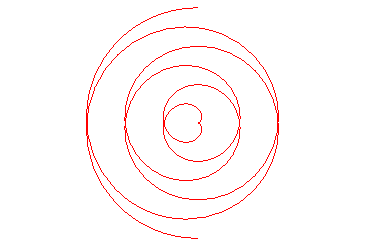
| next curve | previous curve | 2D curves | 3D curves | surfaces | fractals | polyhedra |
INVOLUTE OF A CIRCLE

| Other name: anti-clothoid. |
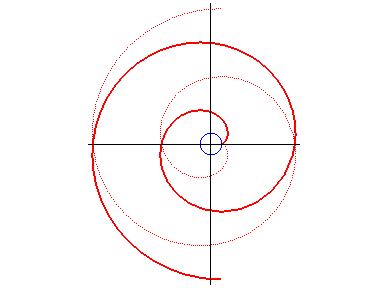
|
Cartesian parametrization: Complex parametrization: Polar parametrization: Polar equation: Cartesian tangential angle: Curvilinear abscissa: Radius of curvature: Intrinsic equation 1: Intrinsic equation 2: Pedal equation: Cartesian differential equation: |
The definition of this curve is given by its name (see
involute)!
| The involute of a circle is the curve for which all the
normals are tangent to a fixed circle.
More practically, it is the curve traced by a hand unwinding a wire reel held in the other hand. |
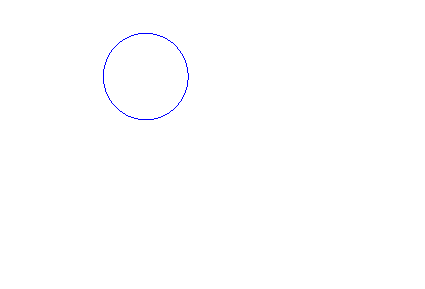 |
| Conversely, if an involute of a circle turns around the centre of the generating circle, every tangent to the circle remains always normal to the involute. | 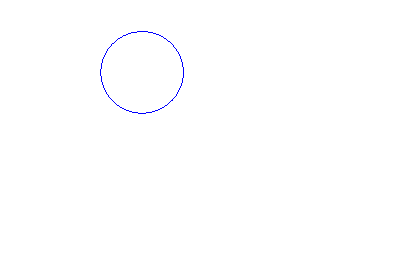 |
| For large values of t, the Archimedean
spiral
with equation |
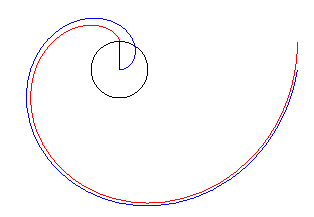 |
| This last property has the following consequence: if an involute of a circle is turned uniformly around its centre, then the tangents to the involute having a given direction move in a uniform translation motion: it is the reason why the profile of cams is an involute of a circle. |
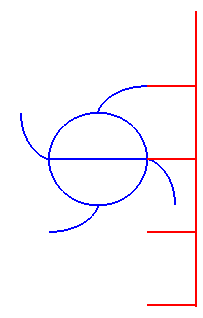 |
The involute of a circle also has a kinematic definition,
due to the formulae :
it is the curve for which, when it is travelled along in a uniformly varying
movement, the rotation speed of the tangent
is constant (hence its name anti-clothoid, because the clothoid,
is the curve for which, when it is travelled along in a uniform movement,
the rotation speed of the tangent
is linear).
| Another kinematic definition:
A person P is walking on a stage turning at constant speed Conversely, the trace of a marble rolling freely on the stage (thus with a linear uniform motion in the fixed frame) is such a curve. |

Case k = 1: involute of a circle. |
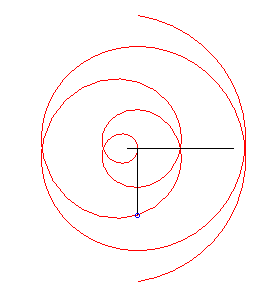
|
| Like any family of involutes of the same curve, the involutes
of a circle are parallel to
one another (by the way, the involute of a circle is the only curve isometric
to its parallel curves).
More precisely, the image by a rotation by an angle |
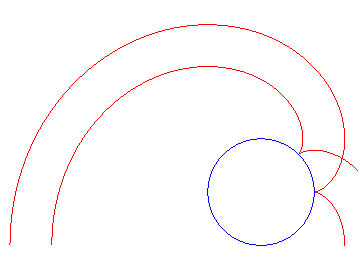 |
| In the special case This implies that if we translate an involute of a circle
by |
 |
| This was applied to design gears (composed here of three
portions of involutes of circles each) called paradoxical gears, because
they turn in the same way.
Make sure to follow the contact points on the black lines. |
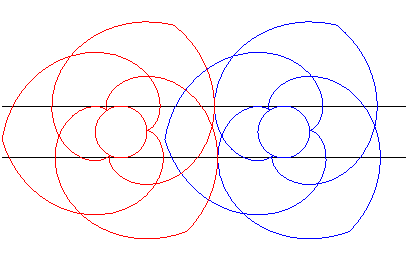
Animation made by J. Lefort |
| Let us now apply to the translated involute a symmetry
about the common normal; both the involutes remain in contact, but turn
in opposite ways.
Remark: the curves slip on one another at the contact point (it is not on the line joining the two centres of rotation) but this is negligible enough so that it does not cause overheating problems in practice. Therefore, these are not mating profiles. |
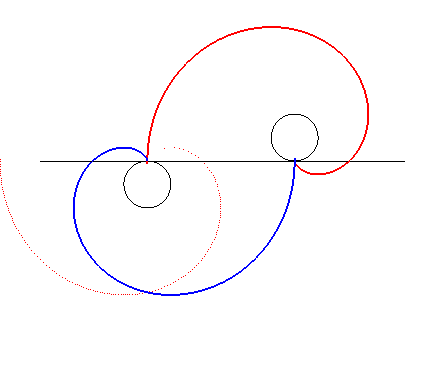 |
| The same gears as above are placed this time on both sides of the line and thus turn in the opposite way. |
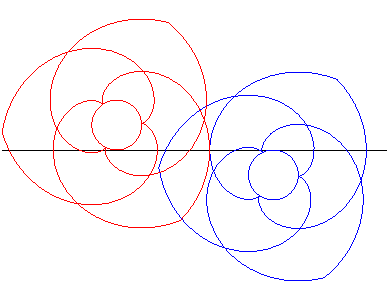
Animation made by J. Lefort |
| Another special case of parallel curve: the symmetrical
involute about the centre of the circle is parallel to the initial curve,
at distance |
 |
| By duality
from the previous property, we get the following one: consider an involute
of a circle with radius a and centre O; if this involute
is translated (in red below) in such a way that its centre describes a
circle with centre O and radius Advice: follow with your eyes a tangency point. |
This property, discovered by Léon
Creux (cf. patent
in 1905 and article
in 1911) is used in the fabrication of gas compressors called spiral
compressors, or scroll compressors.
The family of moving spirals is defined by |
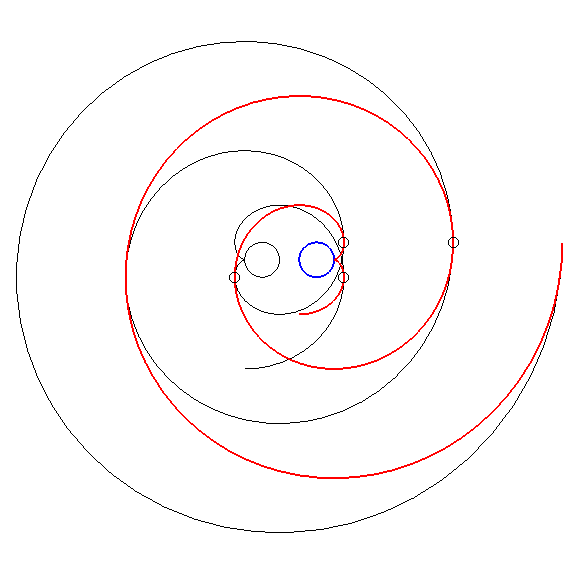 |
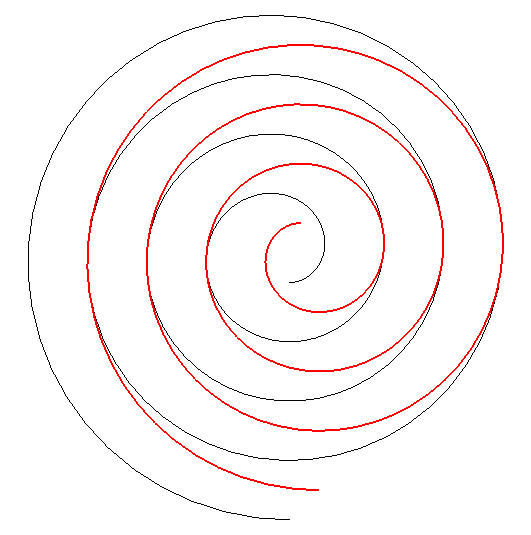 |
| Animation showing the use of involutes of circles for classic gears. The involutes stay in contact on a tangent common to both the circles. |
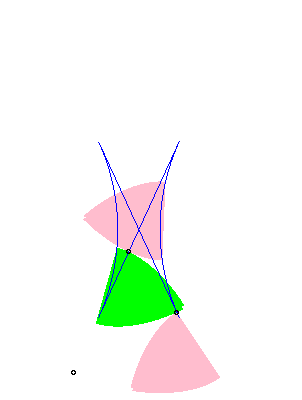 |
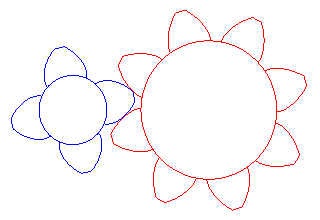 |
The section of the developable helicoid by a plane perpendicular to the axis is an involute of a circle.
The projection of an helix of the paraboloid of revolution is an involute of a circle.
The involute of a circle is a sectrix and a quadratrix.
Its inverse with respect to its centre is the tractrix spiral, and its negative pedal is the inverse caustic of a circle.
Its involutes are the curves for which the radius of curvature is equal to the distance to O, plus a constant, one of them being the Norwich spiral.
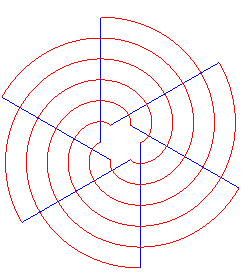
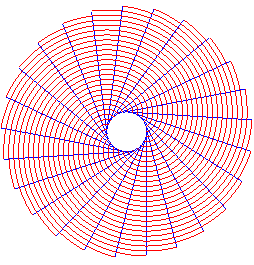
The half-involutes of a given circle form a double
orthogonal system together with the half-tangents to the circle
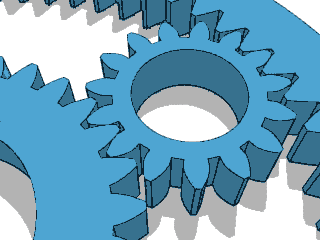
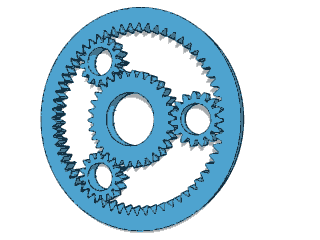
Gears in involutes of circles made by Vincent Viton.
| next curve | previous curve | 2D curves | 3D curves | surfaces | fractals | polyhedra |
© Robert FERRÉOL 2017